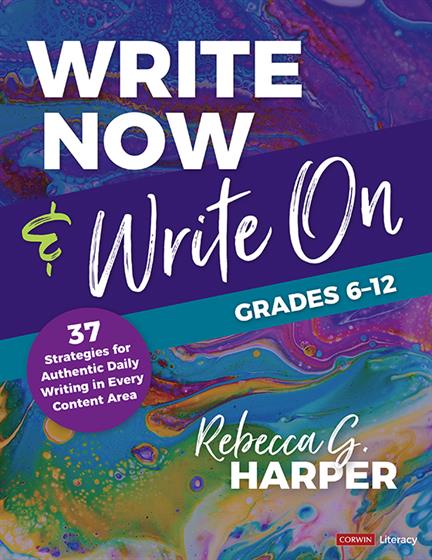Hands-on, Practical Guidance for Educators
From math,
literacy, science, equity, multilingual learners, and SEL, to assessment, school counseling,
and education leadership, our books are research-based and authored by experts
on topics most relevant to what educators are facing today.

Write Now & Write On, Grades 6-12
37 Strategies for Authentic Daily Writing in Every Content Area
Customizable strategies turn students’ informal writing into a springboard for daily writing practice in every content area—with a focus on academic vocabulary, summarizing, and using textual evidence.
Product Details
- Grade Level: 6-12
- ISBN: 9781544398556
- Published By: Corwin
- Series: Corwin Literacy
- Year: 2021
- Page Count: 272
- Publication date: August 26, 2021
Review Copies
Review copies may be requested by individuals planning to purchase 10 or more copies for a team or considering a book for adoption in a higher ed course. Request review copy


